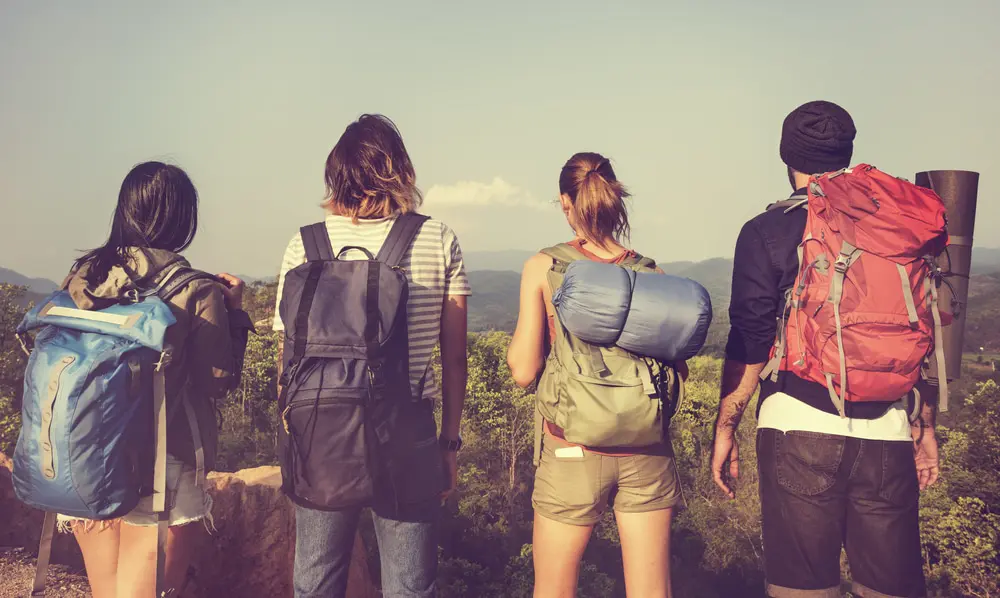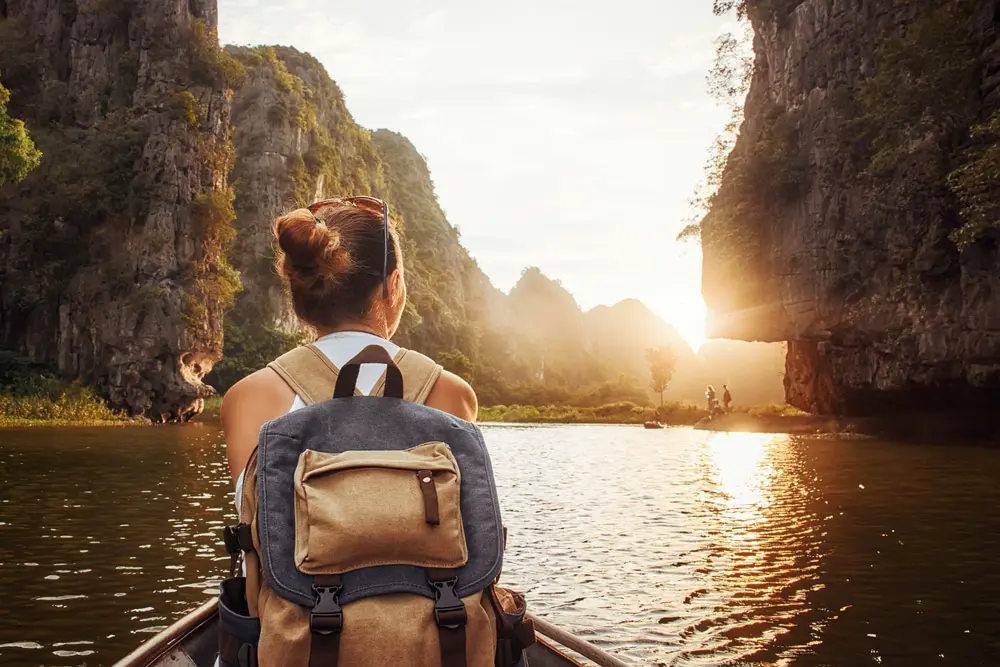Travel and tourism might not be something we have thought about over the last two years as COVID and COVID restrictions have been the centre of attention. But now that things are gradually getting better (hooray!) we can begin to travel again and begin to concoct travel plans for our near future. And what better time to try completely new and unique ways of travelling than after we haven’t been able to do for so long?
Backpacking is an extremely interesting and unique form of travelling and it is something that has really risen in popularity over the last decade or so. Once something thought to only be desirable in extreme circumstances, it is now a preferred form of travel and exploration for lots of people over the world (and estimated to have attracted around 10.75 million US citizens when last reported in 2020).
So, what it is? And how do you do it?
What is backpacking?

Backpacking is very simply a cost-friendly and low-luxury way of travelling lots of places in a short space of time. Those engaging in backpacking usually bring everything they need for their trip on their back in a backpack, often including camping gear. When staying overnight, backpackers either choose to camp outdoors, to room share or to stay in inexpensive hostel accommodation.
The trend has risen in popularity in young people over the last decade with a fashion of “wanderlust“.
Many young people have chosen this route in order to travel frequently and cheaply, producing many travel bloggers and travel influencers on social media sites such as Instagram.
It’s a pretty simple concept due to the fact that the practice in itself is very simple, that’s much of the point.
So, with that in mind, how do you do it and what should you know before you go for the very first time?
Here are our best suggestions.
1. Know what you are willing to give up and what you aren’t

The way that each person backpacks will be different because each person has different priorities and interests. There are things that some people are willing to give up and some just aren’t.
A lot of this knowledge does come from experience and time spent backpacking, but it is good to have a think and reflect on this before you go to avoid any excessive discomfort or unhappiness throughout your trip.
Some things you might consider whether you want to give up or not could be:
- Proper indoor bathrooms and showers
- A room to yourself
- Sleeping indoors
- Eating out rather than cooking for yourself
- Being alone vs. being in a group
- Level of accomodation comfort: hotels vs. hostels vs. camping
- Taking transport vs. hiking/walking
- Contact with technology
- Access to facilities such as washing machines, dryers, and chargers
What you can and can’t do will determine your trip and that is ok, it’s better to know in advance so you can plan the best possible trip for you.
2. It’s all about minimalism
When it comes to packing and preparing for a backpacking trip, the main thing to remember is that it is all about minimalism and going lightly.
It isn’t about bringing lots of different outfits so that you can have lots of looks wherever you go, and it isn’t about having an outfit for each day. In fact, it’s very little to do with having outfits at all.
When you are backpacking it is all about bringing as little as you can with you and spending as little as you can while seeing as much of the world as you can and having the best possible experience.
It’s about shifting your priorities from things to experiences, and that is the beauty of it all.
(Also, you really don’t want to be carrying a lot of things around on your back, that simply feels horrible).
3. Making sacrifices is essential, but never sacrifice your safety

A lot of people will choose to go alone when they are backpacking. This can be a big part of the appeal for people, spending time away from all the normal stresses and responsibilities of their daily life.
And while this can be a great experience to have, it is also important to plan your backpacking trips in such a way that you know will you be safe and secure. Especially when part of the experience can be sleeping outdoors, camping, and hiking alone.
Make sure you always do your research on the places you are going and staying before you leave and make sure you let other people know where you will be.
Have some backup safety measures with you at all times including backup chargers, extra food and water, and any equipment you might need to keep yourself safe. It is much better to have these things and not need them than to need them and not have them. The tiny bit of extra weight on your bag is always worth it for safety.
4. Always have a Plan-B
When you are out in the world backpacking things can (and will) go wrong. This is ok and is simply the nature of life but you need to make sure that you are prepared for this and have some suitable backup plans.
Especially if you are doing outdoor activities and are relying on good weather conditions to be able to sleep, you will need to have an indoor alternative in case things go wrong.
As we’ve said, always better to prepare.
5. People have been backpacking for decades – seek advice and stories

One of the great things about making plans to backpack is that you have a wealth of stories and experience out there to help guide and support you.
People have been backpacking for decades and they continue to do so all over the world. If you ever need help with any aspect of the journey you can consult books, blogs, forums, social media, and more to get help and guidance from all different kinds of people.
It has its roots in community and that continues to this day.
So why not take the leap, get out there and see what is waiting for you and your backpack?

